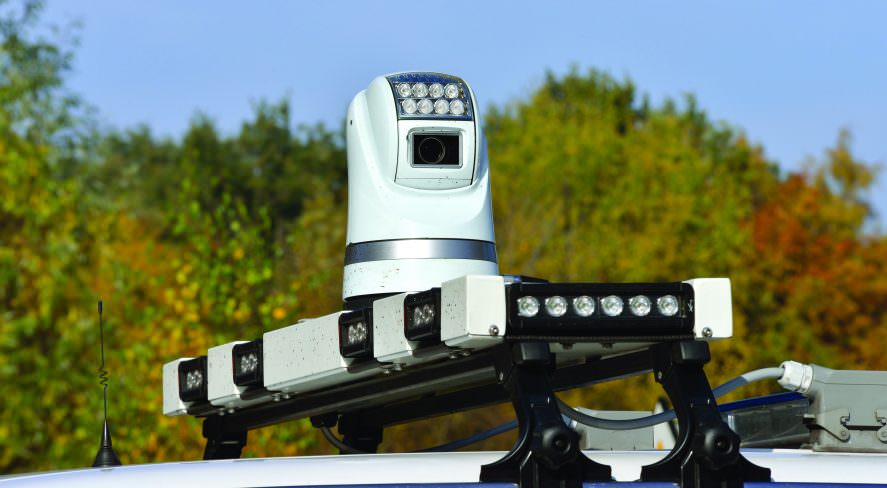Law & Order & Video

Police and prosecutors need enhanced case management systems

Pota Kanavaros, Genetec
In the security sector, while information is great, what we strive for is clear and actionable data. Both seeing and understanding are vital. To that end, we continue to deploy more cameras in physical security systems and collect and share more data than ever before. But this increase is not without its challenges. Managing and storing growing amounts of data can overwhelm systems that were not designed to accommodate the new types of video and other digital data and metadata that are being collected by today’s law enforcement tools.
In 2016, a national security researcher filed a federal lawsuit against an agency in the United States claiming that they were using an outdated software system for processing Freedom of Information Act (FOIA) requests. The issue for the researcher was that, by using what is essentially a computer-based card catalogue instead of a web-based search tool, this agency is not conducting searches in good faith.
According to the claim, while the agency is technically complying with FOIA requests, the time it takes to search its databases is unnecessarily long, and the results are often incomplete as they rely on outmoded and restrictive search methods. Regardless of the legal outcome, the filing of the suit points to the importance of data and how analog – in some cases, archaic – technology can hamper an organization’s ability to search and manage it.
The Impact on Law Enforcement
One area that is particularly affected, both positively and negatively, by the changes in the amount of data being collected, is law enforcement. In an ideal world, an increase in the quantity and variety of digital evidence would mean that law enforcement would have more information with which to prevent and prosecute crime.
However, when departments have to deal with old processes, unsearchable data, or an inability to keep up with the costs associated with data storage, video evidence may be underutilized.
Currently, many systems used by law enforcement agencies in North America are based on old technologies that use CDs/DVDs and agency computers to store digital evidence. The potential problems with this are extensive.
From a lack of evidence stability and security to difficulties with sharing and cross-referencing, law enforcement is facing real challenges when it comes to video surveillance footage.
While the volume of evidence being collected and managed is increasing, law enforcement is not seeing an equivalent rise in cases being closed. Before we can begin to change this, we have to understand why the amount of data being collected by law enforcement is growing so dramatically.

Body-Worn is Booming
More than three-quarters of police cars in North America are equipped with dash cams and the number of sworn officers wearing body cameras is increasing. As of 2013, more than 30 percent of local police departments in the United States used body-worn cameras, and the percentage is significantly higher among major cities. The Department of Justice recently announced that it will make $75 million in federal grants available to provide as many as 50,000 body-worn cameras to local police departments.
We have seen that dash cams and body-worn cameras have the potential to help law enforcement improve relations with the communities they serve while increasing transparency and accountability. Researchers from the University of Cambridge’s Institute of Criminology published the first scientific study on the impact of body-worn cameras. They found that the very fact that police were wearing cameras contributed to reducing both unnecessary use-of-force by officers as well as abusive behavior toward the police by the public.
But putting a camera in every patrol car and giving every sworn officer a camera is far more complicated than just purchasing a lot of hardware.
When we consider the amount of footage being captured by these cameras as well as the metadata associated with this footage, we start to see why data collection, storage, and management are such important issues.
More Data to Store and Archive
Overall, law enforcement is producing a lot more data. One of the reasons for this is that it would be counterproductive for them to capture low-quality video footage. To this end, the Department of Homeland Security (DHS) has published recommendations regarding body-worn cameras for police departments that include an image resolution of at least 640×480 pixels and a frame rate of at least 25 frames per second. By following these recommendations, law enforcement can ensure that they work with the high-quality footage. However, this also means that they produce very large files, which can create storage and retention problems.
Recently, a police department in California began investigating the possibility of providing body-worn cameras to their officers. During this process, they learned that a 30-minute video took about 800 MB of storage space. If they were to provide every one of their 200 sworn officers with cameras, the department could potentially generate 33 terabytes of data each year.
Factoring in government-defined retention rates relating to each category of crime and the fact that, when data is used as evidence in a court case, the requirements become even longer, it is very likely that a large portion of this data will have to be stored for years, even decades after it is collected.
The Institute of Criminology research highlights this concern. While it found that body-worn cameras appear to be cost-effective, with every dollar spent saving about four dollars in complaint litigation, it also found that the sheer volume of data storage required to support these programs has the potential to become crippling. Even as the equipment and technology have become less expensive over time and the return on investment has increased, other costs have the potential to skyrocket.
Video from Other Sources
The police are not the only ones who are capturing more video evidence content. The number of civilians carrying smartphones capable of capturing high-quality video is increasing. People everywhere are now able to contribute to police investigations. Whether it is video taken intentionally of an incident or event in progress or captured accidentally when a person is filming something else, private smartphone video can play a pivotal role in helping to keep communities safe.
But how can we make this work? It is not feasible to have people just drop off USBs or DVDs of the video footage they collected. At the same time, we do not want to lose evidence that can help prevent or solve a crime.
The same can be said of video footage captured by private businesses, retailers, and educational institutions. If they could share that video content with law enforcement, they could contribute to the protection of their communities.
While getting private businesses to share their video surveillance footage with law enforcement is less haphazard than having citizens with smartphones provide their footage, the same challenges exist, but on a larger scale. Namely, how does anyone effectively share video footage with law enforcement?
The Pressing Issue of Data
With the existing system, an average investigation can include multiple CD/DVDs of initial video surveillance footage from a crime scene, as well as other discs that result from search warrants conducted over the course of the investigation. And, of course, investigations also include footage from in-car dash-cams, officer-worn cameras, and footage from non-law enforcement sources. Then, as the case progresses, investigators might add discs from the lab and tape from every suspect interview.
Once law enforcement has finished its investigation, it must prepare the footage to be sent to prosecutors, defense lawyers, and insurance companies. Because many law enforcement agencies rely on mail services to transport their video evidence, this preparation involves converting surveillance footage into a readable format and burning it onto a CD/DVD. And, in order to protect privacy, it also means redacting any faces that appear in the video. These manual tasks can take hours to complete.

Then, once the footage is received, legal staff must be able to call up specific pieces of information in the development and prosecution of a case. When everyone involved is forced to sort through CDs/DVDs, costs skyrocket and information can easily be missed.
Understanding the Full Cost
What are we actually discussing when we talk about cost? First, there is the basic expense of the system and all the time that law enforcement officers and technicians spend logging video evidence, converting surveillance footage into readable formats and redacting faces. Then there is the cost of burning and mailing CDs/DVDs. With this, there is also a potential cost associated with the inadvertent loss of footage from incidents, which can lead to case dismissals and millions of dollars in lawsuit awards or settlements.
In addition, this method of sharing video data can have a negative impact on the very system it is designed to support by causing a chain of custody problems. When a CD/DVD is burned and transported manually, it can create questions about who has seen, touched or manipulated it. This can make building a solid case difficult and can end up costing law enforcement and prosecutors time, while costing municipalities and taxpayers money.
Finally, the time that officers, prosecutors and technicians spend on these – sometimes fruitless – tasks is time not spent on other activities, such as actually patrolling a community and making it safer.
Impact on the Legal System
Legal organizations have started setting policies and defining principles for how to manage data. These policies frequently relate to keeping costs and legal fees low during the discovery, pre-litigation and litigation phases of a case while, at the same time, ensuring the best possible legal support for clients. They focus on evidence management systems that help legal staff reduce the time spent searching data.

When it comes to reviewing video surveillance footage, examiners also face a number of shortcomings and difficulties when using some of the commercially available forensic tools. Many of these tools are costly, complex to use, able to analyze only one data source at a time, and complicated enough to require extensive examiner training in order to be used effectively. In addition, as data sources increase in size, complexity, and type, forensic tools have begun to take even longer to perform specific functionalities. This can result in costly delays, as well as lapses in the legal process.
Case Management for the Future
As the amount of digital evidence per investigation continues to grow, the management of it threatens to become operationally and economically unfeasible for law enforcement. When the data being stored doubles every 18 months, it is unlikely that traditional case management systems, which were not designed to cope with these volumes, will be effective.
We need to think differently about digital evidence, and we need to develop solutions that will meet both current and evolving needs.
Law enforcement agencies need a case management system that can help them turn the data they are collecting into higher case clearance rates.
They need to be able to manage and store digital evidence from cameras and other devices in meaningful and scalable ways. In addition, these solutions must facilitate collaboration and the sharing of information with other departments, agencies and jurisdictions. And, at the same time, they must protect privacy.
A forward-looking case management solution should allow law enforcement to gather and synchronize data from a variety of sources, including video surveillance systems, body-worn cameras, smartphones, in-car dash cams, computer-aided dispatch, and record management systems. It should also save time on labor-intensive tasks related to evidence collection by converting and playing videos automatically, automating facial redaction, tracking chain of custody, automating reporting and helping both law enforcement and technicians locate media quickly.
And, to encourage collaboration, the solution needs to be capable of integrating with multiple systems while also making it possible to manage user and group permissions as well as access rights for documents and cases. In this way, it would work to remove silos and standardize evidence collection by harmonizing digital evidence within an ecosystem of records management and case management systems.
We must not let the increase in video surveillance footage and other data overwhelm law enforcement agencies. It is imperative that we provide them with tools that will enable them not only to collect, store and manage all of this content, but also to use it as efficiently and effectively as possible.
Pota Kanavaros (pkanavaros@genetec.com) is product marketing manager for Genetec (www.genetec.com).
